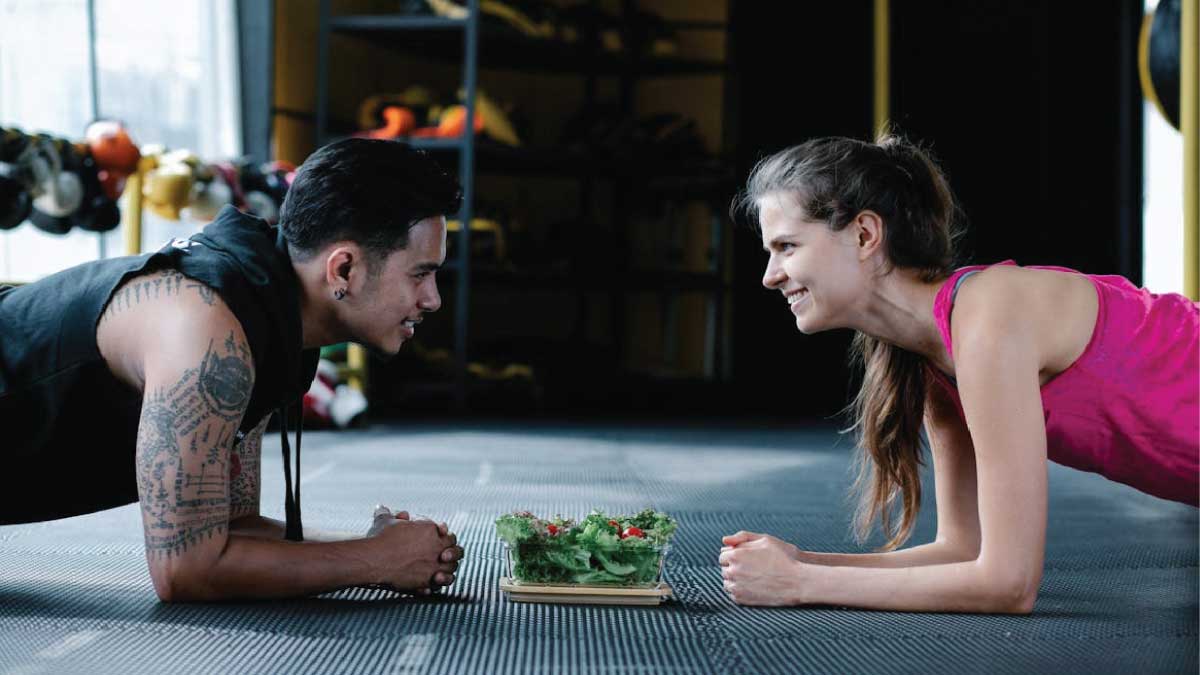To perform a plank, start in a push-up position, with your hands directly under your shoulders. Engage your core, keeping your body in a straight line from head to heels. Hold this position for a set amount of time, focusing on breathing and proper form.
Welcome to our comprehensive guide on mastering the plank exercise! If you’re on a journey to transform your fitness routine, look no further. The plank is a cornerstone of core strength training, revered for its simplicity and effectiveness. Whether you’re a beginner or a seasoned fitness enthusiast, this step-by-step guide will help you unlock the full potential of this foundational exercise.
Understanding the Plank:
Before diving into the practical steps, let’s delve into why the plank is a must-have in any workout regimen. Unlike traditional crunches that primarily target superficial muscles, the plank engages multiple muscle groups simultaneously, including the abdominals, obliques, lower back, and shoulders. This holistic activation not only sculpts a toned midsection but also enhances overall stability and posture.
Step 1: Setting Up Proper Form
Achieving the perfect plank begins with proper form. Start by positioning yourself face down on the floor, with your elbows bent at a 90-degree angle and directly beneath your shoulders. Keep your body in a straight line from head to heels, engaging your core muscles to prevent sagging or arching.
Step 2: Engaging the Core
Once in position, focus on engaging your core muscles. Imagine drawing your belly button towards your spine while simultaneously squeezing your glutes and thighs. This activation creates a solid foundation, maximizing the effectiveness of the exercise while minimizing strain on other muscle groups.
Step 3: Finding Your Balance
Maintaining balance is key to a successful plank. Distribute your weight evenly between your elbows and toes, avoiding excessive pressure on any one area. Imagine rooting down through your forearms while simultaneously pressing away from the floor with your toes, creating a sense of length and stability throughout your body.
Step 4: Breathing with Purpose
Inhale deeply through your nose, allowing your abdomen to expand as you fill your lungs with air. Exhale slowly and steadily through your mouth, drawing your navel towards your spine to engage your core even further. Consistent, controlled breathing not only enhances your focus but also facilitates better oxygenation of your muscles, promoting endurance and efficiency.
Step 5: Maintaining Proper Alignment
As you hold the plank position, pay close attention to your body’s alignment. Avoid overarching your lower back or allowing your hips to droop towards the floor. Imagine creating a straight line from your head to your heels, with every muscle engaged and working harmoniously to support your body’s weight.
Step 6: Pushing Your Limits Safely
As you become more proficient in the plank, challenge yourself to push beyond your comfort zone safely. Experiment with variations such as side planks, forearm planks, or plank jacks to target different muscle groups and keep your workouts engaging. Remember to listen to your body and honor its limits, gradually increasing intensity and duration as your strength and endurance improve.
Step 7: Incorporating Progression and Consistency
Like any aspect of fitness, mastering the plank requires dedication and consistency. Aim to incorporate plank variations into your regular workout routine, gradually increasing the duration and intensity over time. Set realistic goals and celebrate your progress along the way, trusting in the transformative power of consistent effort and dedication.
The Emotional Journey of Strength: A Deeper Dive
As you embark on your journey to master the plank exercise, it’s important to acknowledge the emotional aspect of fitness. Beyond the physical benefits, each plank holds the potential for personal growth and transformation. Let’s explore the emotional landscape of strength and resilience.
Facing Challenges Head-On
Every time you assume the plank position, you’re not just engaging your muscles; you’re confronting challenges head-on. It’s natural to feel moments of doubt or discomfort, but it’s in those moments of struggle that true growth occurs. Embrace the discomfort, knowing that each second you hold the plank brings you one step closer to your goals.
Cultivating Inner Strength
The plank isn’t just about building physical strength, it’s about cultivating inner strength as well. As you hold the position, dig deep into your reserves of determination and resilience. Draw inspiration from the strength within you, knowing that you’re capable of overcoming any obstacle that comes your way.
Celebrating Progress and Milestones
In the journey to master the plank, it’s essential to celebrate every victory, no matter how small. Whether it’s holding the position for an extra five seconds or conquering a challenging variation, each milestone is a testament to your dedication and perseverance. Take pride in your progress, and let each success fuel your motivation to reach new heights.
Finding Joy in the Process
Amidst the sweat and effort, don’t forget to find joy in the process. Embrace the exhilaration of pushing your limits, the satisfaction of feeling your muscles engage, and the sense of accomplishment with each completed plank. Fitness isn’t just about reaching the finish line; it’s about relishing every step of the journey.
Connecting Mind, Body, and Spirit
As you hold the plank, take a moment to connect mind, body, and spirit. Tune into the rhythm of your breath, the sensation of your muscles working, and the focus of your mind. In this state of alignment, you’ll discover a profound sense of wholeness and presence that transcends the physical realm.
Most Viewed Posts:
7 Best Home Workout Routines for Beginners Without Equipment
25 Best HIIT Workouts for Maximum Results
How to Do Good Mornings: 3 Easy Ways and Variations
Conclusion About How to Do a Plank:
In conclusion, mastering the plank exercise isn’t just about sculpting a stronger body; it’s about empowering yourself from the inside out. Through facing challenges, cultivating inner strength, celebrating progress, finding joy, and connecting mind, body, and spirit, you’ll embark on a transformative journey of self-discovery and empowerment. So, embrace the plank, embrace the journey, and embrace the limitless potential within you.

